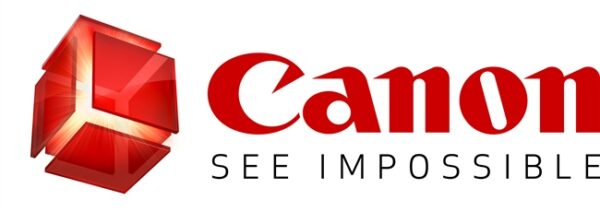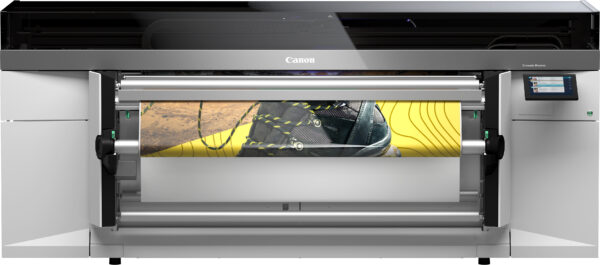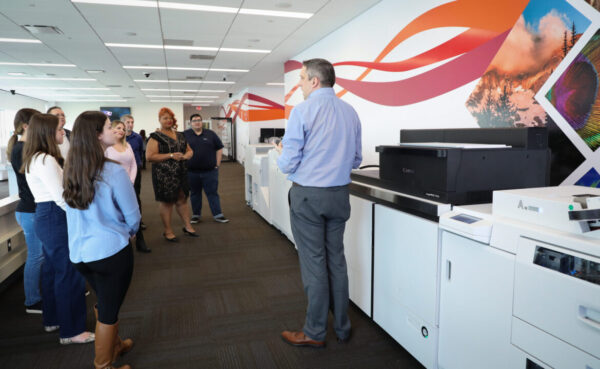For high-volume and specialty scanning applications, standalone scanners can’t be beat.
Top: Panasonic 1058X Scanner
Over the last several years, virtually all enterprises have seen the important advantages of scanning and digitizing paper documents, and subsequently processing and/or storing those documents. Among the advantages of digitizing documents are easier and faster access to documents and information, faster and more efficient document workflows, and improved information security and protection.
In today’s office imaging world, a number of office imaging vendors have invested in robust standalone document scanner lines, including Canon, Epson, Fujitsu, and Panasonic. We asked document scanner product managers about the advantages of standalone document scanners and how office technology dealers can benefit from offering them.
Advantages of Standalone Document Scanners
“Scanners can really be used anywhere where paper documents are found,” said Michael Oliva, manager, product marketing, ICS Division, Canon U.S.A. “The three biggest sectors using scanners are finance/insurance, government (federal and SLG), and healthcare. But scanners are also widely used in retail, education, legal services, and many other areas.”
Kaila Murphy, associate product manager, Epson America, emphasized document scanners are used in virtually every industry, including managing patient records in the”¯healthcare”¯field, creating searchable and indexed records for”¯legal”¯applications, organizing student records and automating grading in”¯education, and much more.
Similarly, Joe Odore, product manager, Office Products, Panasonic Systems Solutions Company of North America, commented that applications for standalone scanners are diverse””from digitizing warehouses full of government documents and forms, to patient onboarding in healthcare, to employee onboarding in human resources, and check scanning in banking.
According to Canon’s Oliva, advantages of standalone document scanners include: a smaller footprint than MFPs, enabling enterprises to regain floor space; faster retrieval of information with digitized versus paper documents; disaster protection; the ability to perform data analytics with digitized information; and business process/robotic process automation of documents and information.
“They can also be a great complement to MFPs in the quest to help organizations streamline workflows or reduce transaction costs, as well as expand information distribution and collaboration,” noted Oliva.
Standalone scanners offer features typically not provided by MFPs, such as:
- Image enhancements, including de-skew, punch-hole removal, blank-page removal, and image cropping.
- Image-preview at the time of scanning for quality assurance, and completion verification.
- Enhanced double-feed detection.
- The ability to scan a wide variety of document types, including two-sided, mixed sizes of originals, thin paper, long documents, passports, and embossed cards, for example. These are documents that many MFPs may not be able to scan.
Standalone scanners are appropriate for high”¯scanning volumes, small workspaces where an MFP won’t fit, and where compatibility with specific software packages not available for MFPs is required, according to Oliva.
He added that standalone scanners are also appropriate for enterprises with enterprise content management (ECM)/document-management software, and for enterprises seeking additional and less-expensive document-input devices. Standalone document scanners can also reduce MFP bottlenecks that occur when large scan jobs prevent users from accessing the MFP for copy and print jobs.
“From high-volume workgroups to small businesses, to demanding office environments, standalone document scanners help professionals easily scan, organize, and upload documents, while saving them time and ultimately increasing productivity,” said Epson’s Murphy. “The benefits of standalone scanners include the ability for users to continue working while scanning and the ability to use digital documents almost immediately.”
In contrast, with centralized MFPs, users might have to wait in line in order to scan documents. With standalone scanners, users save time and have the convenience of a scanning solution in close proximity: “Dedicated document scanners can also breeze through stacks of documents””from business and ID cards to receipts, extra-long pages, and more, while MFPs generally do not support a range of documents,” said Murphy.
Murphy also stated that, unlike with MFPs, standalone document scanners generally experience significantly”¯less wear and tear”¯and can help”¯offices reduce costs”¯associated with MFP service and maintenance. In addition, if the MFP is included in an MPS contract, offices may be charged for each scan, resulting in a higher total cost of ownership compared to a standalone scanner.
For applications such as those within the healthcare and legal industries where preserving the privacy of confidential data is paramount, businesses can benefit from the privacy features of a standalone document scanner. With MFPs, confidential records can sometimes be seen by others waiting to use the MFP or can even be forgotten and left behind at the MFP.
Panasonic’s Odore further emphasized the advantages standalone scanners have over MFPs. First, MFPs aren’t typically designed for high-volume document scanning.
“I refer to MFPs primarily as printers with other functions,” said Odore.
For instance, Panasonic document scanners feature continuous scanning capability, with scanners designed and capable of scanning 5,000 to 8,000 pages per day (up to about 100,000 pages for some Panasonic production models), while MFPs and their document feeders aren’t typically capable of handling that volume. For instance, an MFP’s document feeder may start to overheat and will consequently slow down. Standalone scanners also typically provide better image quality and file compression than MFPs, as well as the ability to digitize scanned images into many different file types, while MFPs typically only output into PDFs and JPEGs.
One of the key advantages of Panasonic standalone document scanners versus MFPs, according to Odore, is the sheer number of productivity-enhancing features they provide. These include features that typically aren’t provided by MFPs such as: blank-page removal, automatic image deskew, automatic image rotation, image noise reduction, batch scanning, double-feed detection, staple detection, automatic cropping, automatic background removal, ID scan (scan both sides of an ID card into a single file), zonal OCR for data extraction, and more.
Without these features, users would have to manually perform many of these time-consuming tasks.
“There’s just a huge number of features that a document scanner offers that an MFP doesn’t,” said Odore. “And of course, using an MFP for large volumes of document scanning ties it up so that it can’t be used for print, copy, or fax.”
The other advantage of standalone document scanners versus MFPs is that very little service is required. While MFPs require regularly scheduled service and periodic replacement of toner, imaging drum, fuser, and other items by service personnel, document scanners require very little maintenance, perhaps just a light cleaning of paper-feed rollers and periodic replacement of paper-feed rollers. Panasonic’s lowest-end scanner’s paper-feed rollers, for example, are good for up 100,000 pages. These maintenance tasks can typically be performed by users. Ultimately, this makes document scanners more cost-effective to operate than MFPs.
Another advantage of standalone document scanners in this increasingly security-conscious age is that they don’t retain scanned data in memory”” because they don’t have a hard drive””so information can’t potentially be stolen. Instead, scanned data is stored in temporary memory that’s scanned over after each scan.
Last, but not least, while MFPs are centralized devices””once installed they typically can’t be moved very easily. Document scanners can be moved much more easily, for example, to the desk of a user performing a high-volume scan job.
Summing up the Standalone Scanning Advantage
In short, standalone document scanners provide some big advantages over MFPs’ scanning capabilities, specifically, better efficiency, higher accuracy, and the ability to handle higher scan volumes that MFPs just typically aren’t built to handle. Office equipment dealers can use standalone scanners to handle heavy workloads to complement MFPs, reducing MFP service by taking heavy document-scanning workflows off the MFP, saving themselves money, and ultimately, making customers more satisfied with the overall reduced MFP downtime and service, as well as improved document-scanning efficiency.
Sidebar 1: Explaining the Benefits of Standalone Scanning
When selling a standalone scanner, office-equipment dealers should explain the scanner’s much more extensive feature set, and how they lessen bottlenecks at the MFP, noted Canon’s Oliva.
In offices where paper is always flowing, sometimes an MFP/copier just isn’t enough to get the job done efficiently. With Epson’s line of commercial document scanners, Murphy says there’s a scanner for every need “”from mobile, desktop, workgroup, and flatbed scanners. She said that, in addition to reliability and low price point, a big selling point for Epson’s commercial document scanners are the included TWAIN and ISIS scan drivers, which integrate seamlessly with a business’ existing software and workflow.
“What it really comes down to is dealers understanding their customer’s needs,” added Odore.
In many cases, he said, it makes sense for a dealer to offer a standalone document scanner along with an MFP to prevent costly servicing of the MFP’s document feeder caused by high-volume document scanning. MFP service visits can cost the dealer from $200 to $300 per visit. High-volume scanning on over-taxed MFP document feeders can also require replacement of the document feeder, which costs on average about $2,000. Instead, said Panasonic’s Odore, with a standalone document scanner and MFP combination package, the standalone document scanner and its document feeder performs virtually all of the scanning. The dealer saves money on MFP service visits, and the customer is happier as service is reduced and there’s less MFP downtime.
Sidebar 2: Standalone Scanner Applications
Scanners are used in a wide variety of ways that cross industries (horizontal usage) such as in business-process automation, records and document management, archiving and storage, customer relationship management, human-resources onboarding, accounting, and mail routing. Some industry-specific (vertical) applications include:
- In legal services, to streamline the discovery process, and to share the information from multiple document types (contracts, invoices, checks, titles, passports, photos, etc.) among lawyers, clients, and other associated parties, improving collaboration.
- In state motor vehicle departments, to obtain information from multiple document types and sizes (automobile titles, licenses, insurance cards, etc.) and transfer them from field offices to central offices with less risk for workflow processing and information archiving.
- In retail, to automatically route invoices and other documents to streamline AR/AP processing, and to take advantage of early payment discounts.
- In state elections, to count and route ballots quickly from the precinct counting offices to the state capital.
- In healthcare, for Explanation Of Benefits AR processing, including categorization, payment, and account reconciliation.
- In finance/insurance, for indexing tracking and filing of mortgage and loan documentation.
Access Related Content
Visit the www.thecannatareport.com. To become a subscriber, visit www.thecannatareport.com/register or contact cjcannata@cannatareport.com directly. Bulk subscription rates are also available.



